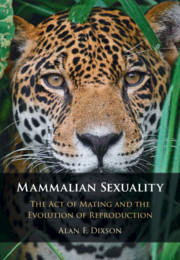Book contents
- Mammalian Sexuality
- Mammalian Sexuality
- Copyright page
- Dedication
- Contents
- Preface
- Acknowledgements
- Part I Carnival of the Animals
- Part II The Act of Mating
- Part III The Evolution of Reproduction
- 5 Phallic Structure and Function
- 6 The Testes and Spermatozoa
- 7 The Accessory Reproductive Glands and Ducts
- 8 Cooperation, Conflict and Cryptic Female Choice
- 9 The Evolution of Mating-induced and Spontaneous Ovulation
- Part IV Epilogue
- Book part
- References
- Index
7 - The Accessory Reproductive Glands and Ducts
from Part III - The Evolution of Reproduction
Published online by Cambridge University Press: 20 May 2021
- Mammalian Sexuality
- Mammalian Sexuality
- Copyright page
- Dedication
- Contents
- Preface
- Acknowledgements
- Part I Carnival of the Animals
- Part II The Act of Mating
- Part III The Evolution of Reproduction
- 5 Phallic Structure and Function
- 6 The Testes and Spermatozoa
- 7 The Accessory Reproductive Glands and Ducts
- 8 Cooperation, Conflict and Cryptic Female Choice
- 9 The Evolution of Mating-induced and Spontaneous Ovulation
- Part IV Epilogue
- Book part
- References
- Index
Summary
In addition to spermatozoa, the products of a number of androgen-dependent accessory reproductive glands are transferred to the female during copulation. These include secretions of the vesicular glands and the prostate (which includes the coagulating glands in some taxa), the Cowper’s, or bulbourethral, glands and ampullary glands. The accessory reproductive glands differ in their taxonomic distribution, sizes and secretory functions. These differences are discussed here, in relation to possible evolutionary effects of sexual selection at copulatory and post-copulatory levels. Although we are currently far from understanding the physiological significance of most of their secretions, some functions of the accessory glands are becoming clearer. This is particularly true of the processes that control seminal coagulation, and the production of ‘copulatory plugs’. Seminal coagulation and plug formation play important roles in sperm transport and survival. Much of this chapter focuses on these topics.
- Type
- Chapter
- Information
- Mammalian SexualityThe Act of Mating and the Evolution of Reproduction, pp. 187 - 204Publisher: Cambridge University PressPrint publication year: 2021

